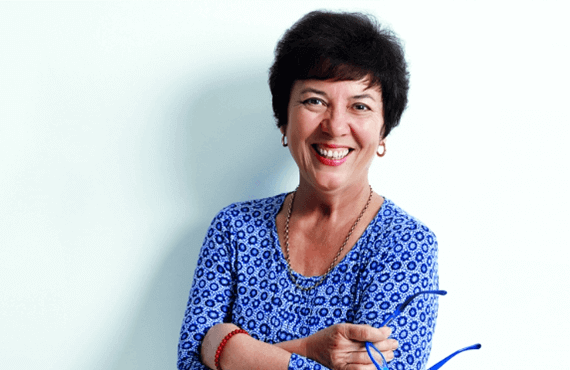Julie McCrossin posted on LinkedIn:
“Just attended a session ESTRO meets ASIA entitled ‘What is the best immobilisation device?’ With three great speakers.
When you have Radiation Therapy you need to be completely still so the beam hits the cancer precisely and avoids as much healthy tissue as possible. Below are just a few slides from the excellent presentation by Sze Yarn Sin, Advanced Practioner Radiation Therapist, National Cancer Centre Singapore. She is in a protontherapy team.
I was so impressed by Sin’s description of the multidisciplinary team work they do with each patient to try to balance safety, plus physical & emotional comfort, with the need to target and hopefully cure the cancer.
A question posed during the session was ‘Should comfort be overlooked to cure cancer?’
Sin said that ‘it’s all about how we pitch it to the patient’ in her talk on ‘Patient Positioning and Immobilisation Procedures for Proton Therapy’. Her service has a culture of communication, education and respect for the individual patient’s physical and emotional capacities during treatment. She described two case studies. One where communication with the patient resulted in a patient accepting a form of immobilisation involving a mask and a mouthpiece to protect the tongue. And a second patient who was so anxious and shaking that an alternative option to Proton Therapy was ultimately chosen by the patient as it took less time on the machine and would be physically and emotionally safer in the circumstances.
As a patient traumatised by wearing a mask, for a treatment that saved my life, it was an emotional experience to attend this session.
My Messages: I) Radiation Therapists & their teams need to be as committed to consistency and reproduceabilty in the educational and emotional support they deliver to patients, as they are in the positioning of the patient and the targeting of the beam.
2) The culture of cancer centres with a genuine focus on patient emotional wellbeing is crucial. Staff and staff training are needed. And senior leadership to fight for resources.
3) The focus on the reduction of physical side effects of treatment is admirable. However, there is insufficient focus in many cancer centres on reducing the traumatic emotional impact of treatment and immobilisation techniques in particular.
Here are the videos I made about my radiation treatment, including the immobilisation mask, providing all the information I wished I had known before treatment started. The video about the making of my mask has been watched by over 177, 000 people
Thank you to Radiation Oncologist, Prof Sandra Turner for interviewing me and helping make these videos.
For people interested in Proton Therapy, I will do another post with more slides from Sze Yarn Sin.”
Source: Julie McCrossin/LinkedIn
Julie McCrossin, a former broadcaster with ABC Radio National, ABC TV, and Network Ten, is now a freelance journalist, broadcaster, and podcaster.
After being treated for stage four throat cancer in 2013, she became an Ambassador for Targeting Cancer and TROG Cancer Research. Julie hosts podcast series for Cancer Council NSW and Head & Neck Cancer Australia, focusing on cancer-related topics.

